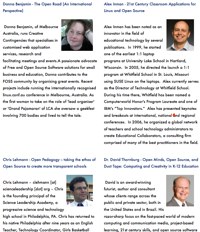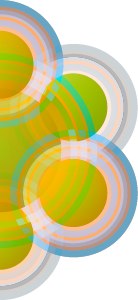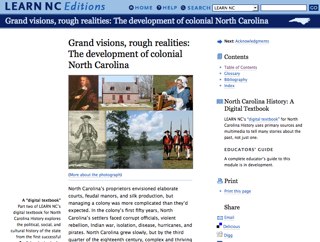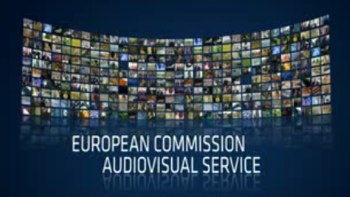![The site of the Pre-Conference Events [click to enlarge]](http://davidwarlick.com/images/isi_001_sml-20080830-095727.jpg) I’m just back up to my office from breakfast, and rolling around in my head the experience I just had in Second Life™ with Chris (Shambles) Smith. Tomorrow will be the first Learning 2.008 pre-conference session in SL. Basically, it will be a panel discussion with two of the conference’s invited speakers, myself (Suriawang Dapto) and Alan Levine (CDB Barkley — or something dog-like), moderated by Chris and David Gran, Shanghai American School Art Teacher.
I’m just back up to my office from breakfast, and rolling around in my head the experience I just had in Second Life™ with Chris (Shambles) Smith. Tomorrow will be the first Learning 2.008 pre-conference session in SL. Basically, it will be a panel discussion with two of the conference’s invited speakers, myself (Suriawang Dapto) and Alan Levine (CDB Barkley — or something dog-like), moderated by Chris and David Gran, Shanghai American School Art Teacher.
I’d stepped in world and teleported over to the site of the event, on International Schools Island — and I suddently found myself completely black (except for my flowing gray hair). I was completely at a loss as to why or how to fix it. Searching through my menus, I found nothing about rebooting my avatar. No matter what cloths I put on, it didn’t help. I would have been happy donning some dreadlocks, except that I didn’t look so much like a Rastafarian than some Hindu devil.
Anyway, just as I was about to give up, I saw the tell-tell signs of another person on the island. Flying over, I found Chris Smith, who I suspect is responsible for fitting the place out. He immediately averted his eyes, until he realized that I was not naked, just completely black. So we tried several things, even taking off all of the clothes that my inventory indicated I was wearing. Fortunately there were some bushes near by. Nothing helped.
So Chris then took me back to orientation island to seek out help from one of the guides. I have to confess that my memories of Orientation Island (the starting place for all Second Life residents) are not all pleasant. Learning to walk in a straight line was a special challenge for me, and I kept falling off the cliff.
Anyway, there were several very knowledgeable helpers there, if also rather scantily clad — and they tried everything, to no avail. My rather scruffy gray jacket would appear for a moment, and then turn to black again. They finally gave up and sent me to Help Island.
I’d never been there before, and wasn’t sure that Chris hadn’t slipped me the wrong landmark when I arrived. But he suddenly materialized beside me, and suggested that I just ask out loud if anyone knew why I was completely black. I hesitated more because no one was speaking English (mostly languages I didn’t even recognize) than bashfulness. But finally I asked the question, mentioning that I was from New Zealand, which accounted for the accent. They didn’t buy that one. But immediately, someone walked up and asked, “Are you using two monitors?”
I nodded my head and said, “Yes!” into my microphone.
“Is Second Life running in the secondary monitor?”
Again, I nodded my head and said, “Yes!”
Then he explained that there was something in the programming of SL that prevents the textures of clothes and skin textures from rezing when the window is in a secondary monitor. I moved the window back over to my laptop monitor and then rebaked my textures. That did tickle a bit.
Finally, back to my same old self. Now that I’m back at home, typing into my blog, I’m thinking that this is similar to conversations that my children have all the time, where they have a problem or a goal, and go someplace virtual miles away, to find someone who can help them.
I still don’t know why folks want to dress so flamboyantly in Second Life. Glad Brenda wasn’t looking over my shoulder.
Hope to see you at the Learning 2.008 Preconference event at 9:00 east coase time on August 31 (tomorrow). Interestingly Chris’ wife called him to dinner at the same time that Brenda called me down to breakfast. You see, Chris lives in Thailand.
![[Click to Enlarge Image] Picture of Panel in Second Life](http://farm4.static.flickr.com/3278/2813603369_ff8d4a765e_m.jpg) Just had a wonder time being a panelist for the first Second Life? pre-conference event for the Learning 2.008 conference in Shanghai (Sept 18-20). This was also my first experience in a speaking roll on Second Life, and it wasn’t half bad. In the picture, moving from left to right, they are Chris Smith (Bangkok), Myself (Raleigh), Jeff Utecht (Bangkok), CogDog Alan Levine (Denver I think he said), and David Gann (Shanghai).
Just had a wonder time being a panelist for the first Second Life? pre-conference event for the Learning 2.008 conference in Shanghai (Sept 18-20). This was also my first experience in a speaking roll on Second Life, and it wasn’t half bad. In the picture, moving from left to right, they are Chris Smith (Bangkok), Myself (Raleigh), Jeff Utecht (Bangkok), CogDog Alan Levine (Denver I think he said), and David Gann (Shanghai).
 But as I read through it I became increasingly intrigued by
But as I read through it I became increasingly intrigued by 
![The blue bar represents the combined numbers applied by students for their use of the skills in classwork, and the red represents use in outside-the-classroom information experiences. [click image to enlarge] Picture of Student Rankings of Skills Applications](http://davidwarlick.com/images/skill_flag_sml-20080830-110244.jpg)
![The site of the Pre-Conference Events [click to enlarge]](http://davidwarlick.com/images/isi_001_sml-20080830-095727.jpg)

 I’m sitting in the auditorium of the Old Saybrook High School in Connecticut. I do not start for another hour, and since another computer is connected to the project, I have mine on my lap. This is great, because I can keep rearranging my slides :-/
I’m sitting in the auditorium of the Old Saybrook High School in Connecticut. I do not start for another hour, and since another computer is connected to the project, I have mine on my lap. This is great, because I can keep rearranging my slides :-/ Of course, anyone who’s done anything with music, such as listening to it, knows that the experience is social. Think of all those Beatles and Monkeys fan clubs. But music makers have also long been meeting and sharing online, playing their music and selling their old instruments. What’s interesting to me about Koblo is that they are connecting the actual music-making with the community.
Of course, anyone who’s done anything with music, such as listening to it, knows that the experience is social. Think of all those Beatles and Monkeys fan clubs. But music makers have also long been meeting and sharing online, playing their music and selling their old instruments. What’s interesting to me about Koblo is that they are connecting the actual music-making with the community. 

 The issues included security and the place for new tools for learning. One question that arose more than once was a time line for introducing new literacy concepts — when do you start introducing information evaluation, research, ethics, etc. We tend to think of these skills as technology or digital skills. It’s an unfortunate mistake, because it channels us down to thinking of these skills in terms of time-on-machine.
The issues included security and the place for new tools for learning. One question that arose more than once was a time line for introducing new literacy concepts — when do you start introducing information evaluation, research, ethics, etc. We tend to think of these skills as technology or digital skills. It’s an unfortunate mistake, because it channels us down to thinking of these skills in terms of time-on-machine.